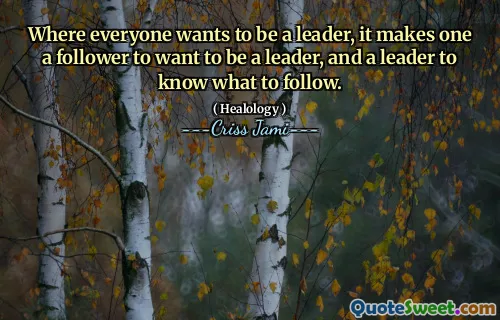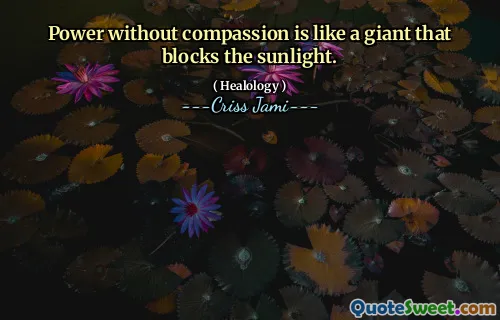
Where everyone wants to be a leader, it makes one a follower to want to be a leader, and a leader to know what to follow.
The quote highlights the complexity of leadership and followership, emphasizing that both roles are interconnected and essential. In a world where many aspire to lead, this desire can paradoxically make one a follower by affirming the value of leadership itself. Wanting to be a leader means acknowledging that leadership holds significance—thus, one becomes a follower of the concept or principle of leadership. Meanwhile, a true leader recognizes the importance of following, understanding that effective leadership doesn’t mean acting in isolation but involves discerning which ideas, values, or individuals to follow. This duality reminds us that leadership is not just about commanding or directing others but is intrinsically linked to listening, learning, and sometimes yielding. It reinforces humility as a crucial trait of leadership—leaders must admit that they do not have all the answers and must draw upon others’ wisdom or collective knowledge. In addition, the quote suggests that in a society saturated with aspirants to leadership, genuine leadership requires self-awareness and discernment. To want to lead is a natural ambition, but to know what to follow elevates one to true leadership. This reflection challenges simplistic notions of leadership as pure dominance or authority and invites us to embrace its nuanced dynamics, where following is not subservience but strategic alignment. Leaders and followers share a symbiotic relationship, each dependent on the other for meaning and function. Ultimately, this insight inspires us to rethink leadership as an ongoing balance of stepping forward and stepping back, influencing and receiving influence, leading and following in turn.










